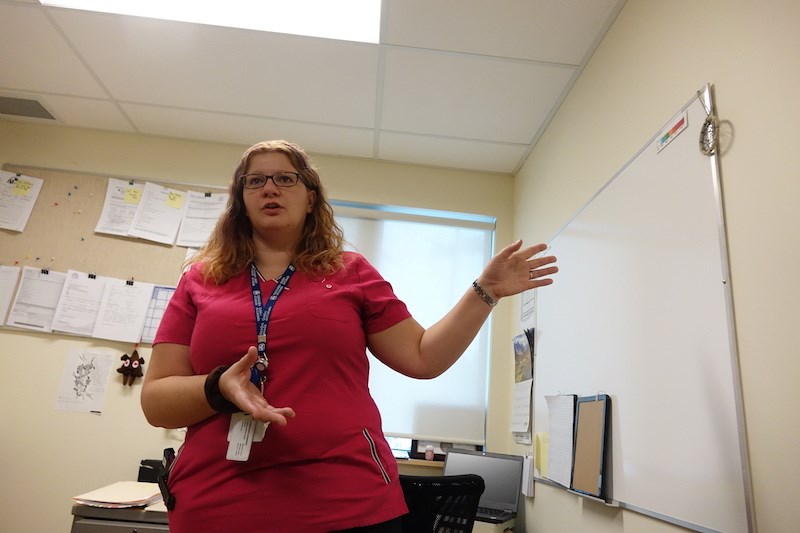RCMP news releases about seizures of methamphetamine are rare compared to those about busts for cocaine or marijuana – there have only been two in the north this year, one in Norway House and the other in The Pas – but the drug is in the community, says the nurse who works at the rapid access to addiction medicine (RAAM) clinic at the Addictions Foundation of Manitoba building in Thompson.
“The meth has hit us pretty bad so I’m dealing with those people coming in,” said full-time RAAM clinic nurse Mary Beaudry Nov. 25, the first day of Manitoba Substance Use and Addiction Awareness Week (MSUAAW). “I’m getting probably at least two calls a week regarding people using meth. Meth has increased hugely in town. It’s here. I know a lot of people say it’s not, but it’s here and it’s rearing its ugly head pretty badly.”
In the first month or so of the clinic’s operating prior to its official opening in October 2018, Beaudry saw one methamphetamine user and one who was injecting morphine. Alcohol and cocaine use are the most common reasons people seek tratment at the RAAM clinic.
Methamphetamines are a stimulant, a class of drugs that also includes caffeine and nicotine and one that makes people feel energized, alert and functional, the AFM’s Dr. Sheri Fandrey told a Thompson audience in 2018. it boosts baseline dopamine levels by as much as 1,100 per cent. As a point of comparison, eating a cheeseburger when you are hungry can boost a person’s baseline dopamine level by 50 per cent, while having sex increases it about 100 per cent. Smoking a cigarette increases a smoker’s dopamine level about 150 per cent, while drugs like morphine and cocaine boost it by 250 and 300 per cent, respectively.
Use of amphetamines, including meth, is rare among AFM’s youth clients in Thompson, with none of them having reported using them weekly or or more frequently in 2015-16 or 2017-18, though seven did in 2016-17. Four adult clients in Thompson reported weekly or more frequent use of amphetamines in 2015-16. That jumped to 11 the following year and remained basically unchanged at 10 in 2017-18.
Thompson RCMP said they had not encountered methamphetamine in the community as of September 2018.
“That is not to say it is not here in small quantities, but we have not seized it,” said then-Thompson RCMP detachment officer-in-charge Kevin Lewis at that time.
Beaudry says that some people who come to her weren’t intending to use meth.
“A lot of the cocaine is tainted with meth in this town so that’s the other problem,” Beaudry says. “People may not think they’re using meth and then they get this weird high and I ask them if … it’s been weird to them and I drug-test them and they have meth and it terrifies people who don’t purposely use it because it makes you crazy. It does. It absolutely makes you crazy.”
The RAAM clinic, which opened in September 2018, has also seen more people seeking help for opiate use lately.
“Cocaine is still around but it seems it’s not as prevalent now,” Beaudry says. “It seems like more people are going into the opiates and the meth and more crack over cocaine.”
The RAAM clinic had seen 99 patients between its opening and a May 9 public safety committee meeting, AFM northern director Gisele DeMeulles said at that time. In the six-and-half months that have passed since then, the number of people who have sought treatment has climbed to over 200.




